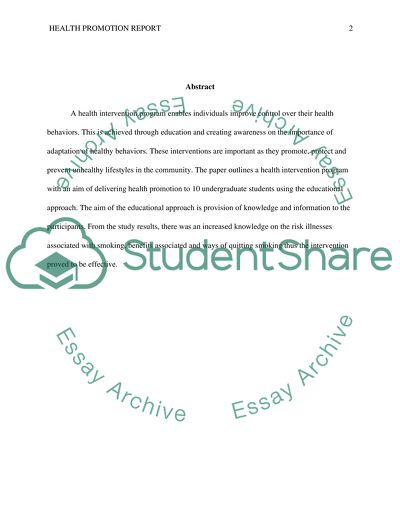Cite this document
(Intervention to Promote Awareness of the Health Smoking Risks among Research Paper, n.d.)
Intervention to Promote Awareness of the Health Smoking Risks among Research Paper. Retrieved from https://studentshare.org/health-sciences-medicine/1677106-health-promotion-report
Intervention to Promote Awareness of the Health Smoking Risks among Research Paper. Retrieved from https://studentshare.org/health-sciences-medicine/1677106-health-promotion-report
(Intervention to Promote Awareness of the Health Smoking Risks Among Research Paper)
Intervention to Promote Awareness of the Health Smoking Risks Among Research Paper. https://studentshare.org/health-sciences-medicine/1677106-health-promotion-report.
Intervention to Promote Awareness of the Health Smoking Risks Among Research Paper. https://studentshare.org/health-sciences-medicine/1677106-health-promotion-report.
“Intervention to Promote Awareness of the Health Smoking Risks Among Research Paper”, n.d. https://studentshare.org/health-sciences-medicine/1677106-health-promotion-report.


